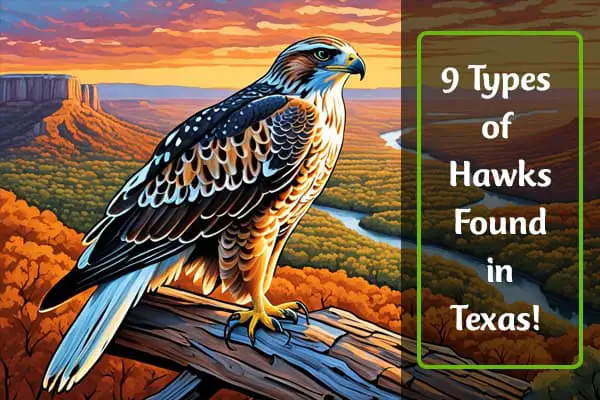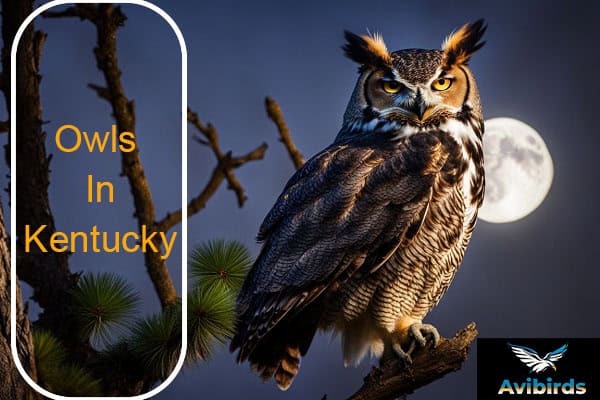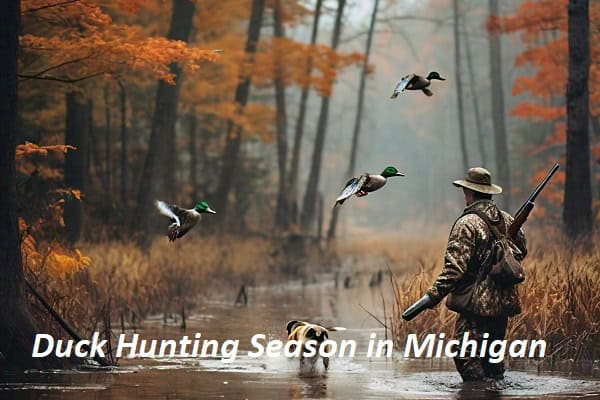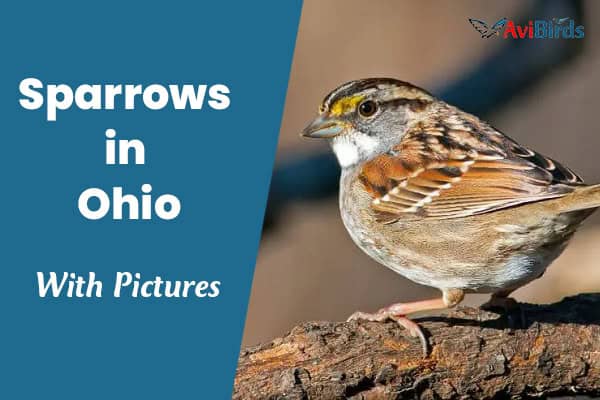9 Types Of Hawks In Texas (With Pictures)
Ever wondered about the amazing variety of hawks in Texas? This state, the biggest in the continental U.S., is home to 670 bird species, including many hawks. But how many types of these amazing birds live in Texas?
There are 24 hawk species in the U.S., and Texas is home to 19 of them. But only 15 of these species are found regularly in the state. From the big Red-tailed Hawk to the rare Ferruginous Hawk, Texas is a great place for these birds. Let’s explore the world of Texas hawks and see where you can find them in nature.
1. Red-shouldered Hawk
- Scientific name – Buteo lineatus
- Lifespan – 10 years (average)
- Size – 16.9 to 24 in
- Weight – 17.1 to 27.3 oz
- Wingspan – 37 to 43.7 in
- Status – Least concern
The red-shouldered hawk is a medium-sized hawk known for its unique look. It’s a favorite among birdwatchers in Texas. Its reddish-brown belly and black and white wings and tail make it stand out.
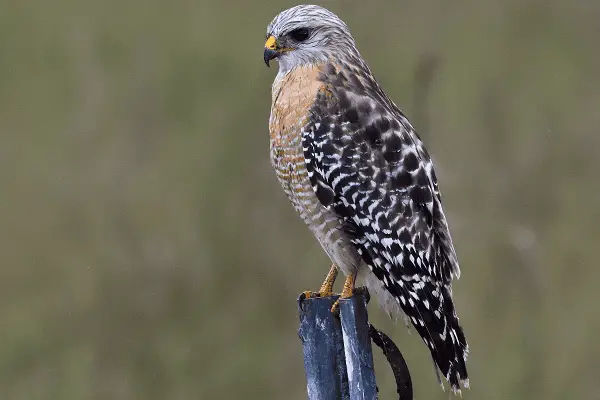
These hawks live in moist, deciduous forests and near water. In Texas, they’re found in various regions like the Pineywoods and the Blackland Prairies. They’re common in the eastern and southern parts of the state.
They breed from mid-February to late June. They often come back to the same nest year after year. Their nests are big and sit high in tall trees. They eat small mammals, reptiles, amphibians, and sometimes birds.
The red-shouldered hawk population in Texas has been going down. But, they can still be seen in many forests and even in some suburban areas. Bird lovers can find them in the eastern part of the state, especially where there are old trees and water nearby.
| Habitat Preference | Seasonal Occurrence | Population Trend |
|---|---|---|
| Moist deciduous woodlands and forests, often near water | Common throughout the year, breeding in the area | Decreasing trend in recent years |
2. Red-tailed Hawk
- Scientific name – Buteo jamaicensis
- Lifespan – 7 years (average)
- Size – 17.7 to 25.6 in
- Weight – 24.3 to 51.5 oz
- Wingspan – 44.9 to 52.4 in
- Status – Least concern
The red-tailed hawk is a common sight in North America, especially in Texas. They stand out with their reddish-brown tails and dark bellies. These hawks are skilled hunters, often seen on telephone poles or tall trees, chasing small mammals, birds, and reptiles.

Looking to see red-tailed hawks in Texas? Check out Hagerman National Wildlife Refuge or Goose Island State Park. At Hagerman, you can watch them fly or sit on lookout points. At Goose Island, they hunt over fields and coastal areas.
The best time to see red-tailed hawks in Texas is from late fall to winter. They live in many places like open fields, grasslands, deserts, and even cities. Their size, color, and hunting skills make them a delight to watch in Texas skies.
“The red-tailed hawk is a symbol of power, grace, and resilience in the natural world.”
3. Harris’s Hawk
- Scientific name – Parabuteo unicinctus
- Lifespan – 10 years (average)
- Size – 18.1 to 23.2 in
- Weight – 18.2 to 31 oz
- Wingspan – 40.5 to 46.9 in
- Status – Least concern
The Harris’s hawk is a unique bird found mainly in southern Texas. It stands out because of its social behavior. These hawks often hunt in groups of up to seven, working together to catch prey.
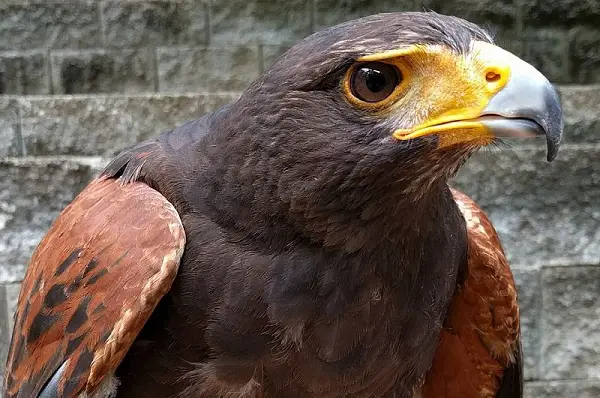
These birds have a special way of hunting. They surround and chase small animals from their hiding spots. You can spot them on tall cacti, trees, or poles, looking for food. Their dark brown color with reddish patches on the wings and long, banded tails make them easy to recognize.
Laguna Atascosa National Wildlife Refuge and South Padre Island are great places to see Harris’s hawks. Here, you can watch them hunt together. This shows how they work as a team, unlike many other Hawks.
“Harris’s hawks are known to breed and hunt communally, with groups of up to seven adults working together to raise young and capture prey.”
Harris’s hawks are adaptable and resilient. Despite threats from urban growth and mining, they thrive in Texas’s varied landscapes. Learning about their social behavior helps us value Texas’s rich nature and biodiversity.
| Hawk Species | Length | Weight | Wingspan |
|---|---|---|---|
| Red-tailed Hawk | 18-26 inches / 45-65 cm | 1.5-3.5 lbs. / 700-1600 gm | 43-55 inches/ 110-140 cm |
| Sharp-shinned Hawk | 9-13.5 inches / 23-37 cm | 3-8 oz / 82-220 gm | 16.5-26.5 inches / 42-68 cm |
| Cooper’s Hawk | 13½-20 inches / 35-50 cm | 8-24 oz / 220-680 gm | 24½-35½ inches / 62-90 cm |
| Northern Goshawk | 16-27 inches / 41-69 cm | 22-50 oz / 630-1400 gm | 35-50 inches / 89-127 cm |
| Red-shouldered Hawk | 15-19 inches / 38-48 cm | 1.1-1.9 lbs. / 500-860 gm | 38-42 inches / 96-107 cm |
More hawks have been seen in Texas over the years. Some, like the Broad-winged Hawk, have moved further west. Hawks are important to Texas’s nature, and we need to protect them. By learning about the different hawks and their ways, we can live in harmony with these amazing birds.
4. Sharp-shinned Hawk
- Scientific name – Accipiter striatus
- Lifespan – 5 years (average)
- Size – 9.4 to 13.4 in
- Weight – 3.1 to 7.7 oz
- Wingspan – 16.9 to 22.1 in
- Status – Least concern
The sharp-shinned hawk is a small, agile bird of prey. It is closely related to the larger cooper’s hawk. Both are known for their skill in hunting birds. They share many physical traits but have key differences that help tell them apart, especially in Texas.
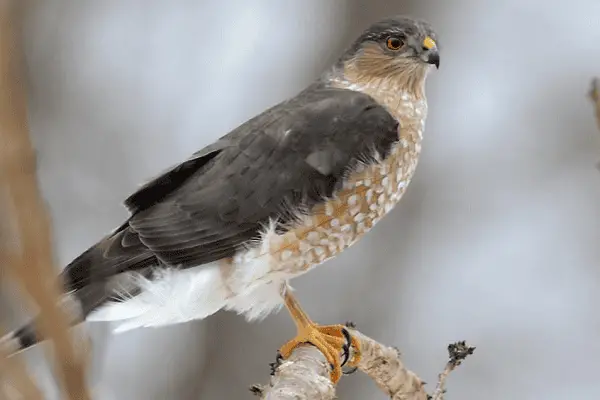
Size is a big difference. Sharp-shinned hawks are smaller, with males as big as a blue jay and females like a pigeon. Cooper’s hawks are larger, with females almost a third bigger than sharp-shinned hawks.
Their tails also look different. Sharp-shinned hawks have a long, square tail. Cooper’s hawks have a rounded, longer tail. Sharp-shinned hawks also have thicker bars on their tails, helping them move through dense woods.
| Characteristic | Sharp-shinned Hawk | Cooper’s Hawk |
|---|---|---|
| Size | Smaller, with males about the size of a blue jay and females slightly larger | Larger, with females nearly a third bigger than sharp-shinned hawks |
| Tail Shape | Longer, square-shaped tail with thicker black and gray horizontal bars | Rounded, slightly longer tail |
| Habitat | Prefer dense, forested areas | More adaptable, can thrive in a variety of habitats, including urban and suburban settings |
Sharp-shinned hawks like dense forests. Cooper’s hawks can live in many places, even cities. Knowing this can help you tell them apart in Texas.
In Texas, you might see both sharp-shinned and cooper’s hawks. Knowing how to tell them apart makes birdwatching more fun. Understanding their looks and where they live helps you spot these birds better.
5. Cooper’s Hawk
- Scientific name – Accipiter cooperii
- Lifespan – 12 years (average),
- Size – 14.6 to 17.7 in
- Weight – 7.8 to 24 oz
- Wingspan – 24.4 to 35.4 in
- Status – Least concern
The Cooper’s Hawk is a medium-sized raptor found all over Texas. It’s known for its blue-gray top parts, reddish-orange underparts, and long, rounded tail. These hawks are experts at hunting birds and often swoop into backyard feeders to catch birds.

They build their nests in tall trees, using old nests or making their own. Cooper’s Hawks live in many places, like woods, cities, and suburbs. This makes them a common sight in Texas.
These hawks have adapted well to living near humans and are great hunters. Their ability to thrive in Texas adds to the state’s rich bird diversity.
Hunting Behavior
Cooper’s Hawks fly uniquely, using a flap-flap-glide pattern. They surprise their prey by flying fast and low, then rising over obstacles to attack.
Habitat and Distribution
Cooper’s Hawks live in different wooded areas, from deep forests to suburban yards. Their ability to adapt has helped them succeed in Texas. They are found in places like the Pineywoods, Edwards Plateau, and Trans-Pecos.
| Characteristic | Male | Female |
|---|---|---|
| Body Length | 14–16 inches | 16–19 inches |
| Weight | 10–14 ounces | Around 18 ounces |
Cooper’s Hawks in western North America are about one-fifth lighter than those in the Eastern United States.
Once hunted because of wrong beliefs, Cooper’s Hawks are now protected. They are an important part of Texas’ bird diversity.
6. Swainson’s Hawk
- Scientific name – Buteo swainsoni
- Lifespan – 16 years (average)
- Size – 17 to 22 in (43 to 56 cm)
- Weight – 17.6 to 59.2 oz
- Wingspan – 46 to 54 in
- Status – Least concern
As the sun warms the Texas landscape, a beautiful sight appears in the sky – the Swainson’s hawk. This bird has dark brown feathers, long wings, and a broad tail. It’s a symbol of Texas, known for its amazing migration.

These hawks travel from Canada and Alaska to South America every year. They soar over Texas, showing off their skills. They eat small mammals, insects, and even carrion, making them adaptable hunters.
In Texas, you can find these hawks in the east, north, and south. They live in different places, thanks to the state’s varied landscapes.
Migration Patterns
The Swainson’s hawk’s migration is a wonder to see. Every spring and fall, large groups fly together. In Texas, you can watch them in April and September.
Studies show that Texas has many Swainson’s Hawks. They live in the Panhandle and south to the 31st parallel. They also breed along the US-Mexico border, especially in the Great Plains.
They start arriving in Texas in February and stay until mid-June. The breeding season is from mid-February to August. Their nests are in trees or bushes, and they lay 2 or 3 eggs.
Even though their numbers are slowly decreasing, Swainson’s Hawks still amaze people with their migrations and adaptability.
“Swainson’s Hawks undertake a 10,000-kilometer migration from North America to South America, particularly Argentina.”
7. Broad-winged Hawk
- Scientific name – Buteo platypterus
- Lifespan – 12 years (average)
- Size – 13.4 to 17.3 in
- Weight – 9.3 to 19.8 oz
- Wingspan – 31.9 to 39.4 in
- Status – Least concern
The Broad-winged Hawk is a medium-sized raptor known for its amazing migratory behavior. They breed in eastern Texas but migrate all over the state. These hawks love to fly together in large groups, called “kettles,” which can have hundreds or thousands of birds.

These large groups are seen in spring and fall as they move to and from their breeding grounds in eastern North America. In Texas, the best places to see them are along the central and southern areas. Here, they use rising air currents to save energy on their long flights.
Kettle Migration: A Soaring Spectacle
Broad-winged Hawks are great hunters, eating small mammals, reptiles, and amphibians in the forest. Their famous behavior is forming “kettles” during migration. At the Smith Point Hawk Watch in Texas, you can see a few to several hundred Broad-winged Hawks in a day.
These flocks soar in rising air currents to save energy and move forward. Seeing these large groups of Broad-winged Hawks is a natural wonder. It draws birdwatchers and nature lovers from all over the world.
Broad-winged Hawks are smaller than Red-shouldered Hawks, like a mix between a crow and a goose. Adults have reddish-brown heads and dark brown wings with white and black bands on the tail. Young ones are lighter brown with coarse streaks on their underparts and a narrow tail band.
In Texas, Broad-winged Hawks are common in the fall but less seen in spring. The best time to see them is at birding spots in the state. Here, you can enjoy their amazing migration.
Winter Visitors to Texas
When the temperature goes down and leaves fall, Texas gets a new group of birds. Among them, the Northern Harrier stands out. It’s known for its low flight and a white patch on its tail.
8. Northern Harrier
- Scientific name – Accipiter gentilis
- Lifespan – 7 years (average)
- Size – 20.9 to 25.2 in
- Weight – 22.3 to 48.1 oz
- Wingspan – 40.5 to 46.1 in
- Status – Least concern
The Northern Harrier is a medium-sized hawk found in open areas like grasslands and marshes. It’s easy to spot because of its long wings and owl-like face. During winter, these hawks are a big draw for bird lovers in Texas, adding to the state’s winter hawk species in Texas.
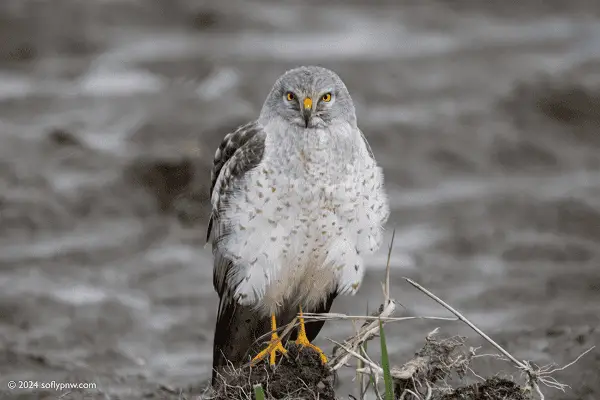
This hawk is a skilled hunter, using its sharp eyes and low flying to catch small mammals and birds. It glides over open fields, always on the lookout for its next meal. Their winter visit shows how diverse Texas’s bird life is and how rich its natural areas are.
“The Northern Harrier is a captivating sight, its distinctive flight and striking plumage making it a true highlight of the Texas winter birding season.”
If you love birdwatching or just enjoy nature, keep an eye out for the northern harrier in texas in the winter. Its unique hunting ways and striking look make it a memorable sight in the Lone Star State.
Rare and Vagrant Hawks
Texas is known for its wide variety of hawks, but it also sees rare and vagrant species. These birds are usually found in Central and South America. They sometimes visit southern Texas, making their sightings rare and exciting. Their visits highlight the rich bird life in Texas’s diverse areas.
Some rare hawks seen in Texas include the Short-tailed Hawk, Roadside Hawk, Crane Hawk, and Great Black Hawk. Birdwatchers and hawk fans love to see these birds. They add these rare visitors to their life lists.
Read Our Previous Articles:
9. Short-tailed Hawk
The Short-tailed Hawk is mostly found in Florida and southern Arizona. But, it visits south Texas in the winter. It looks like the Broad-winged Hawk, but it’s shy and flies high to hunt.
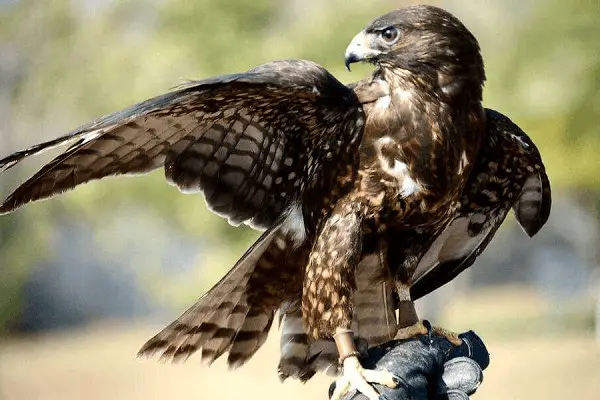
| Rare Hawk Species in Texas | Typical Habitat | Frequency of Occurrence |
|---|---|---|
| Short-tailed Hawk | Florida, southern Arizona | Rare vagrant in south Texas |
| Roadside Hawk | Central and South America | Sporadic visitor to southern Texas |
| Crane Hawk | Central and South America | Occasional vagrant in south Texas |
| Great Black Hawk | Mexico, Central America | Rare sightings in southern Texas |
Top Birding Hotspots for Hawks
Texas is a paradise for birdwatchers, with many great places to see hawks. Big Bend National Park and Santa Ana National Wildlife Refuge are just two spots where you can see these amazing birds. These places offer beautiful views and a chance to see hawks up close.
Bentsen-Rio Grande Valley State Park and Laguna Atascosa National Wildlife Refuge are also great places to see hawks. They have different habitats that attract many types of hawks. You can see Red-tailed Hawk, Harris’s Hawk, Swainson’s Hawk, and Broad-winged Hawk, depending on the season.
If you love birds or nature, these spots in Texas are a must-visit. Hawks are known for their large wings and sharp vision. Seeing them in the wild is a special experience in Texas.

